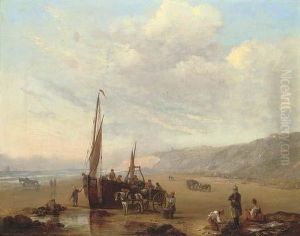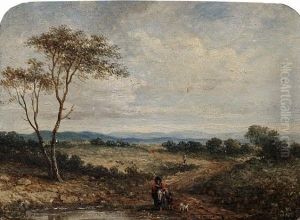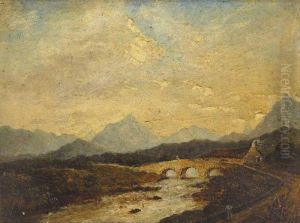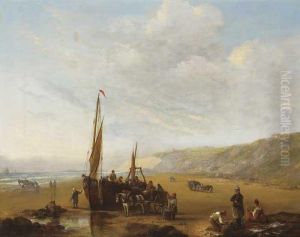John Duncan, King Capt. Paintings
John Duncan was a Scottish painter, part of the Symbolist movement, born in 1866 in Dundee, Scotland. His work is deeply rooted in the Celtic Revival movement, which sought to preserve and revive Celtic art and traditions in response to the rapid industrialization and cultural assimilation of the time. Duncan had a rich educational background that significantly influenced his artistic development; he studied at the Dundee School of Art and later at the Antwerp Academy and in Düsseldorf. His early work was influenced by the Pre-Raphaelites and the Arts and Crafts movement, emphasizing detail, vibrant colors, and a connection to nature and mythological themes.
Duncan's art is characterized by its elaborate symbolism, mysticism, and incorporation of Celtic folklore and mythology. One of his most notable works, 'The Riders of the Sidhe' (1893), exemplifies his interest in Celtic myth, portraying the mythical Sidhe people in a dynamic and ethereal manner. His work not only reflects his deep interest in Scotland's ancient past but also his commitment to the idea of art as a medium for spiritual and national revival. Duncan was also influenced by contemporary Symbolist artists and was part of the broader European movement that sought to represent ideas and emotions through symbolic imagery and themes.
Throughout his career, Duncan was involved in various artistic and cultural projects, including theatre design, book illustrations, and mural paintings. His contributions to the Celtic Revival were not limited to his paintings; he was actively involved in the decoration of public buildings in Scotland, incorporating Celtic themes and motifs into murals and stained glass designs. Duncan's commitment to the Celtic Revival also led him to collaborate with other artists and intellectuals of the movement, contributing to the establishment of a distinct Scottish cultural identity in the late 19th and early 20th centuries.
John Duncan passed away in 1945, leaving behind a legacy that has continued to influence artists and scholars interested in Celtic art and mythology. His work is celebrated for its intricate detail, vibrant color palette, and deep connection to Scottish heritage. Duncan is remembered as a key figure in the Celtic Revival, whose artistic vision helped to preserve and celebrate the rich cultural traditions of Scotland.



